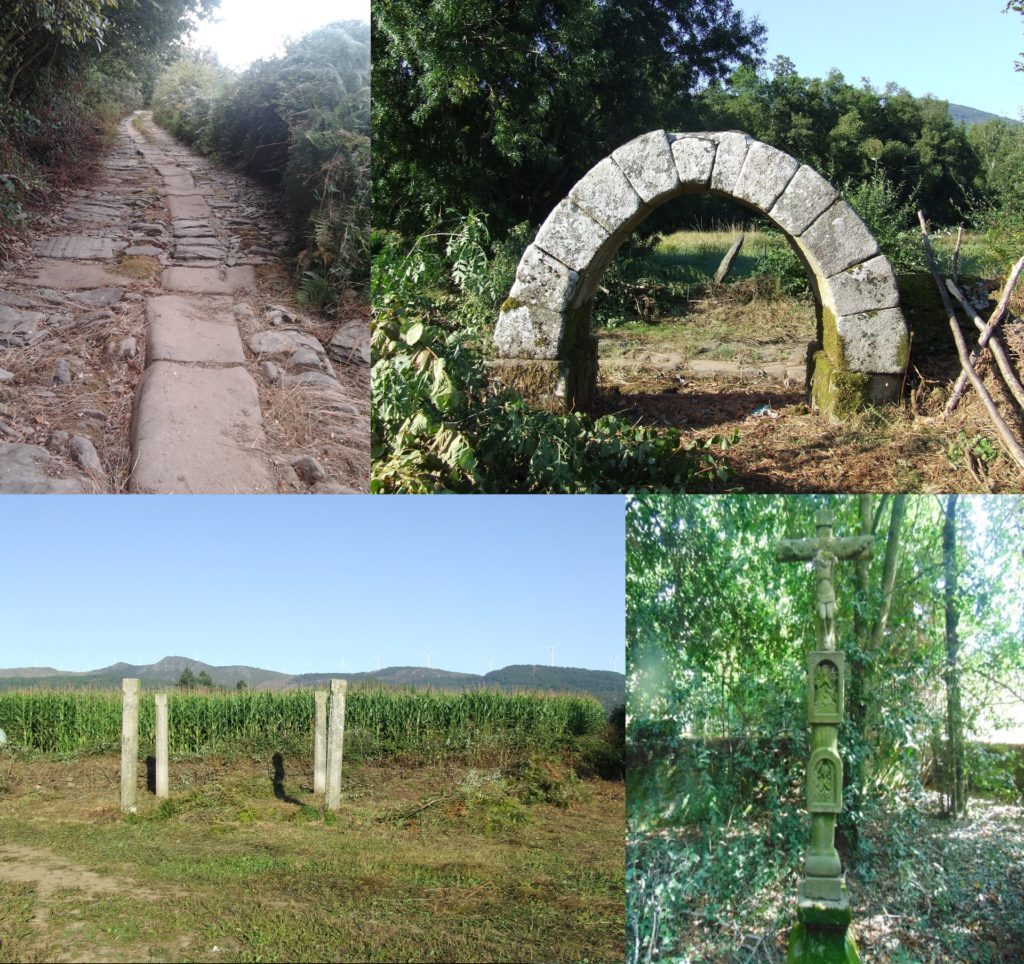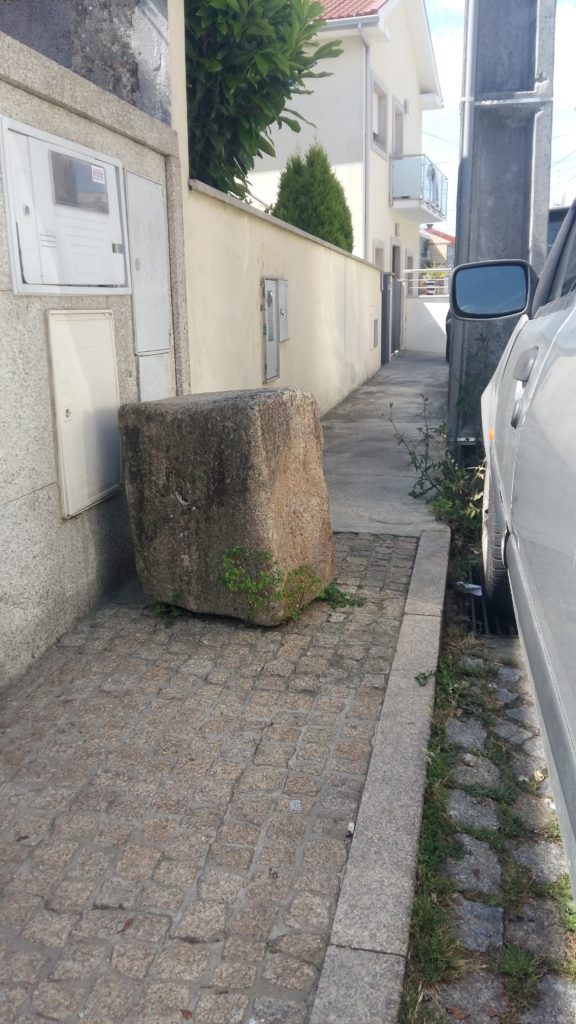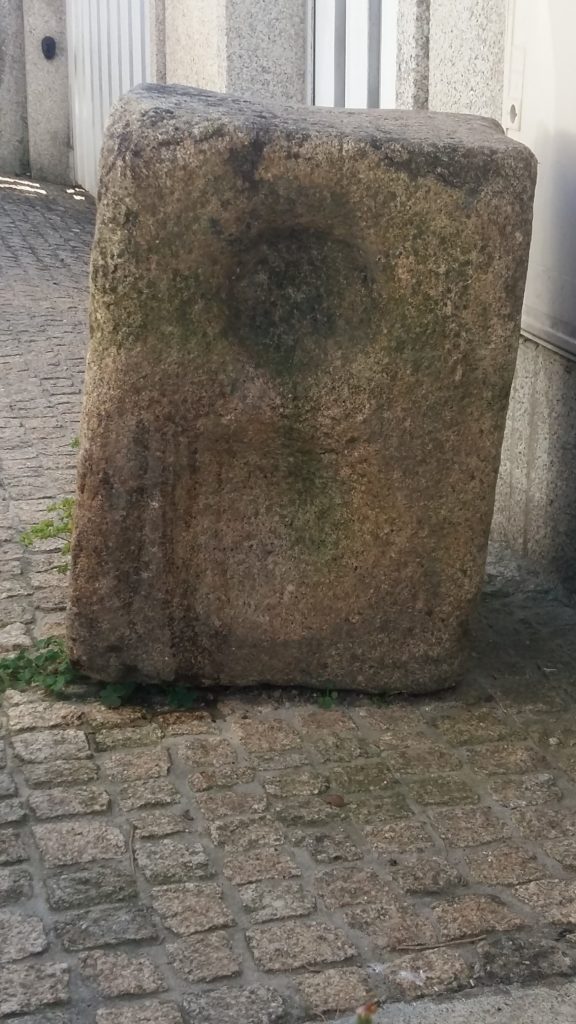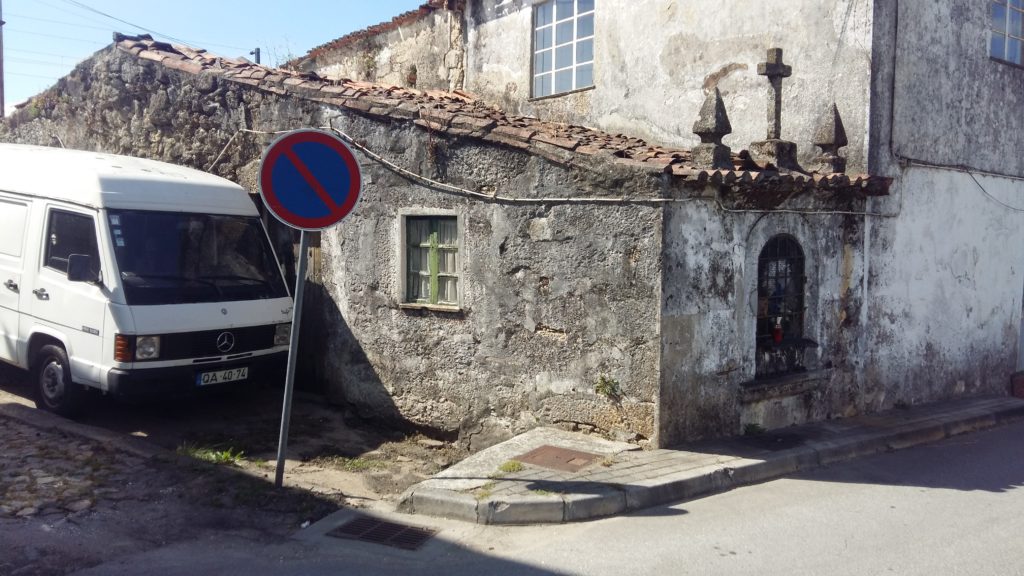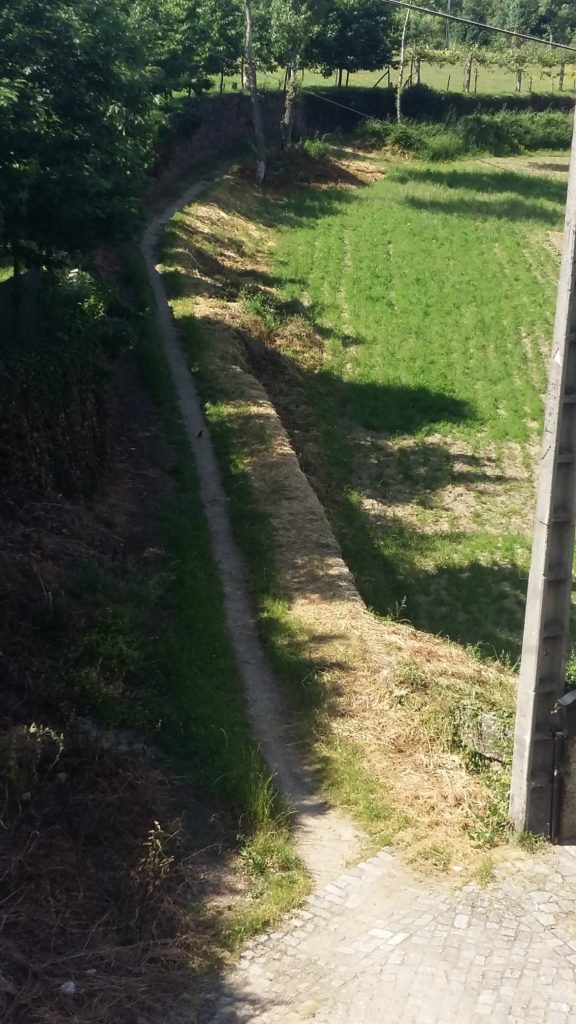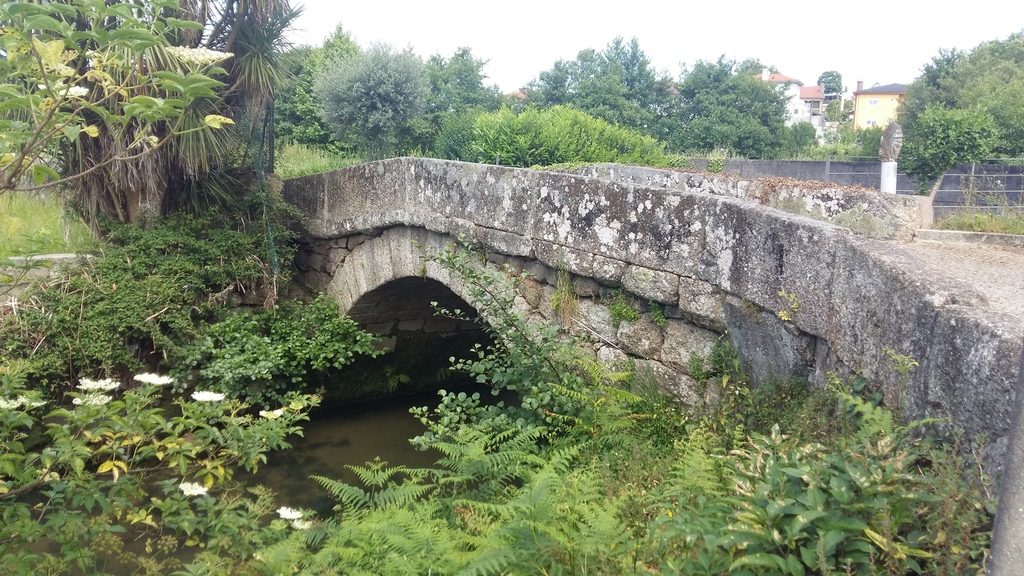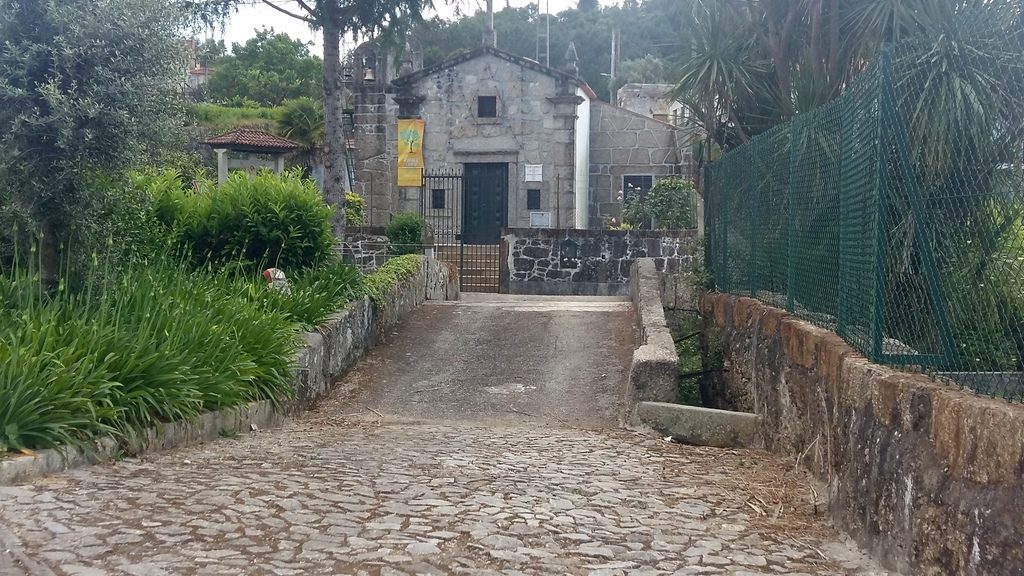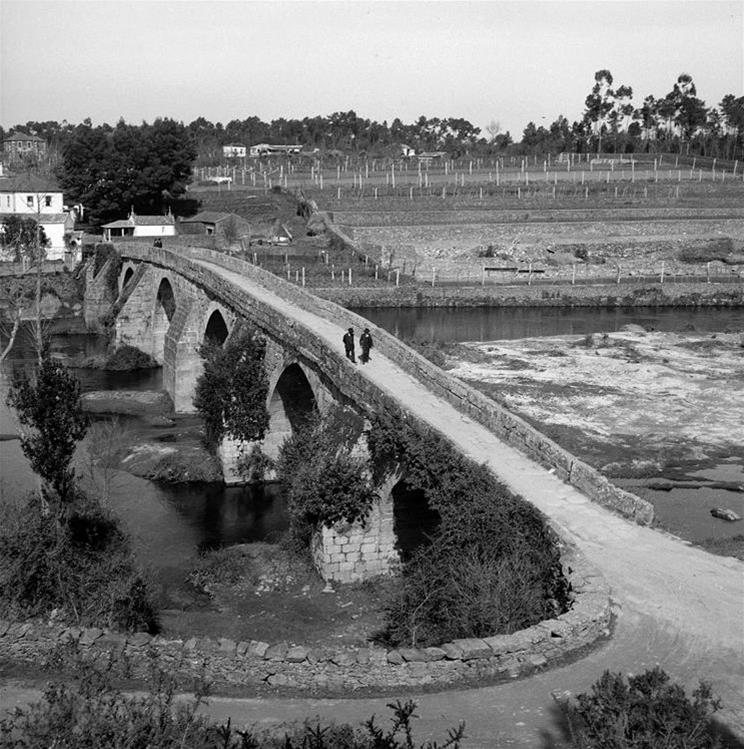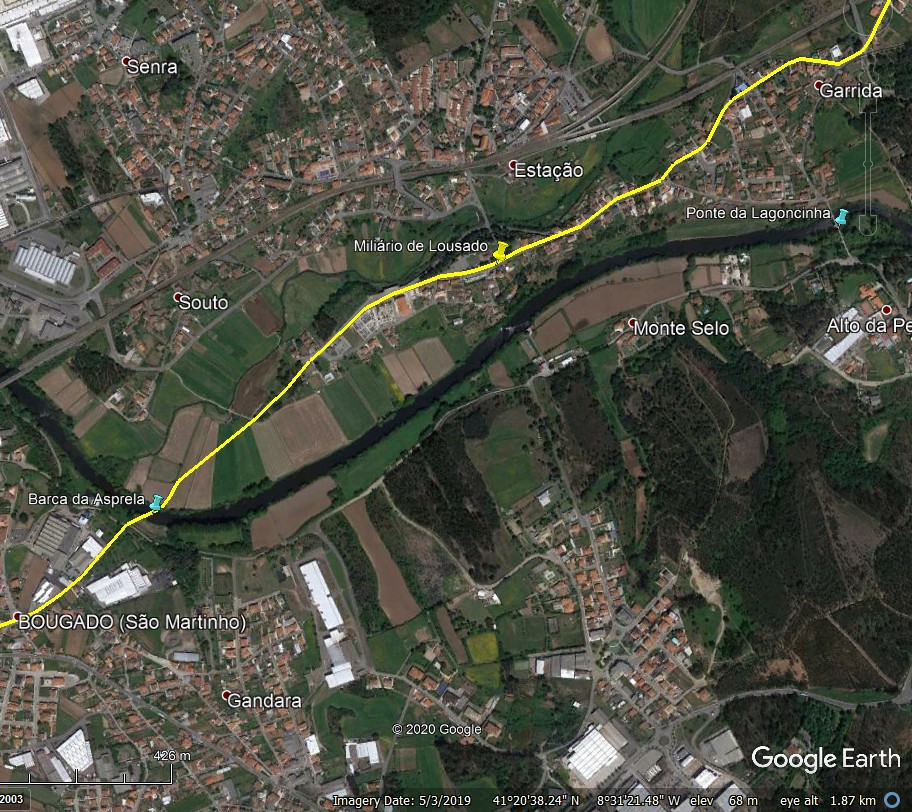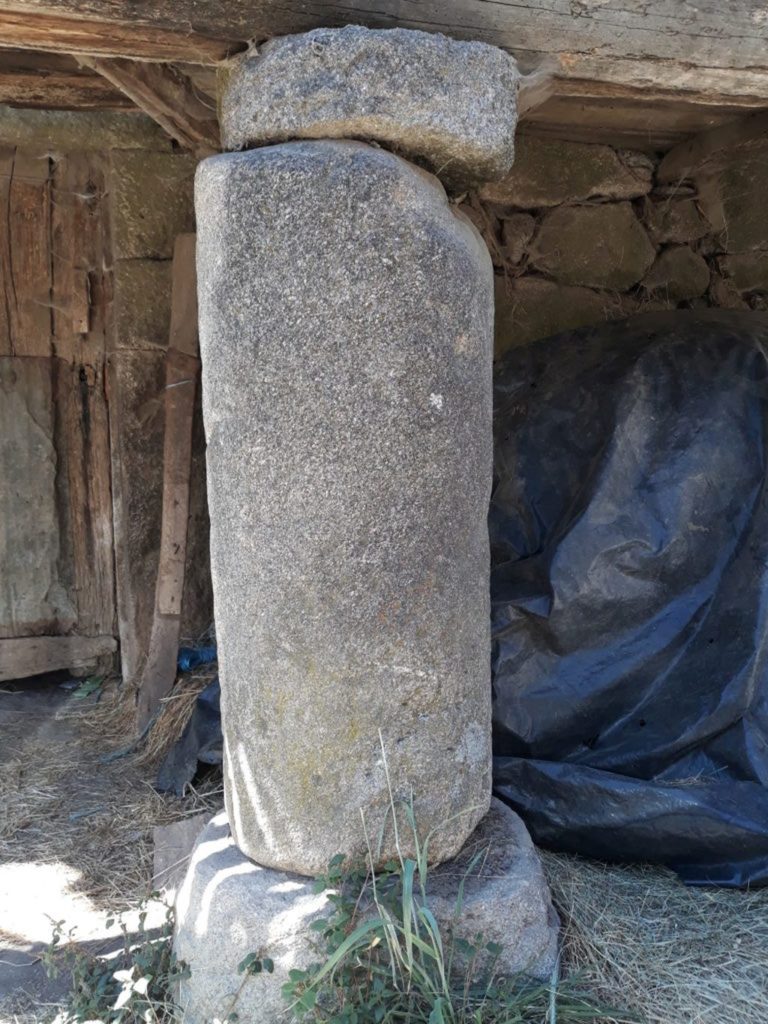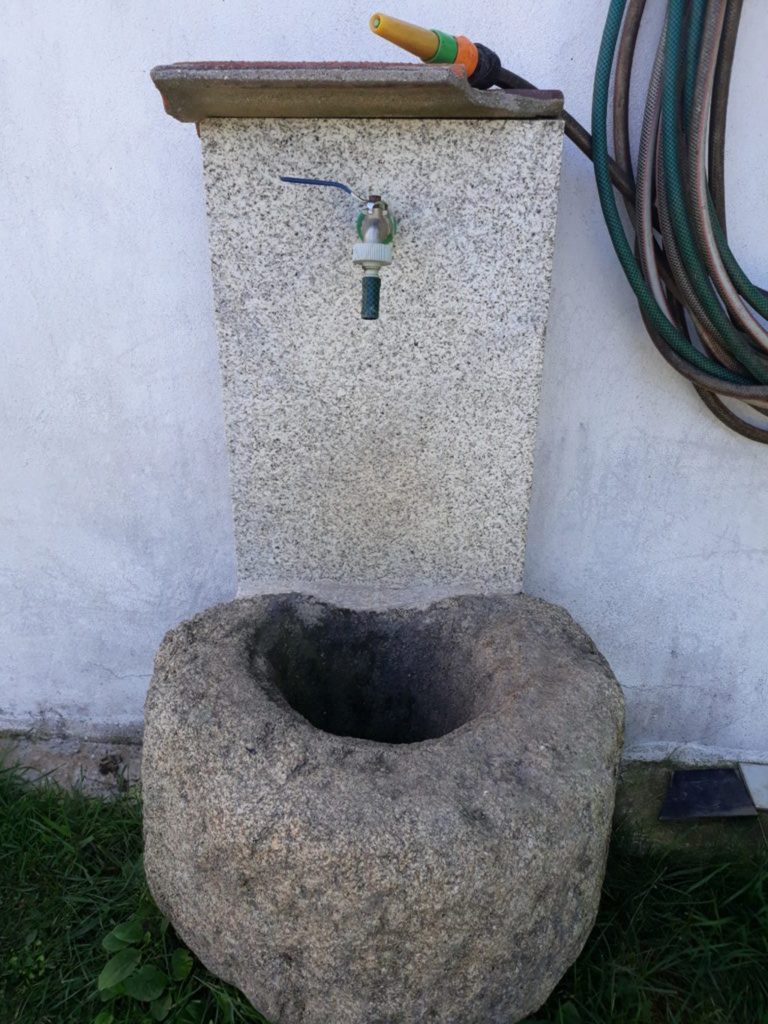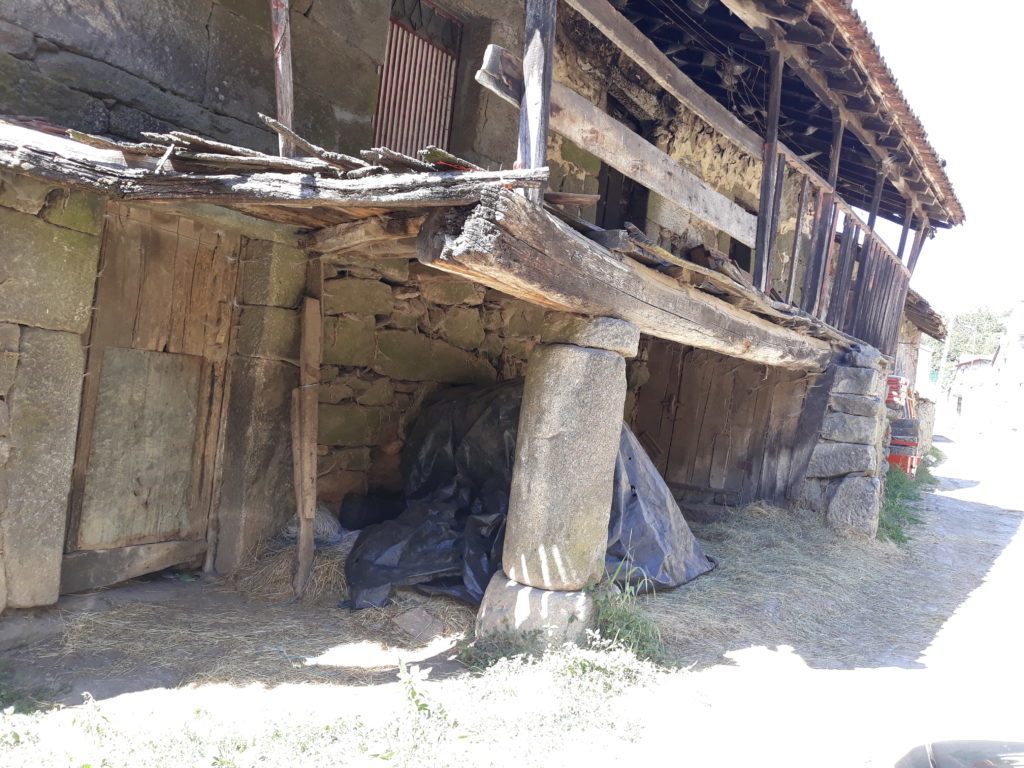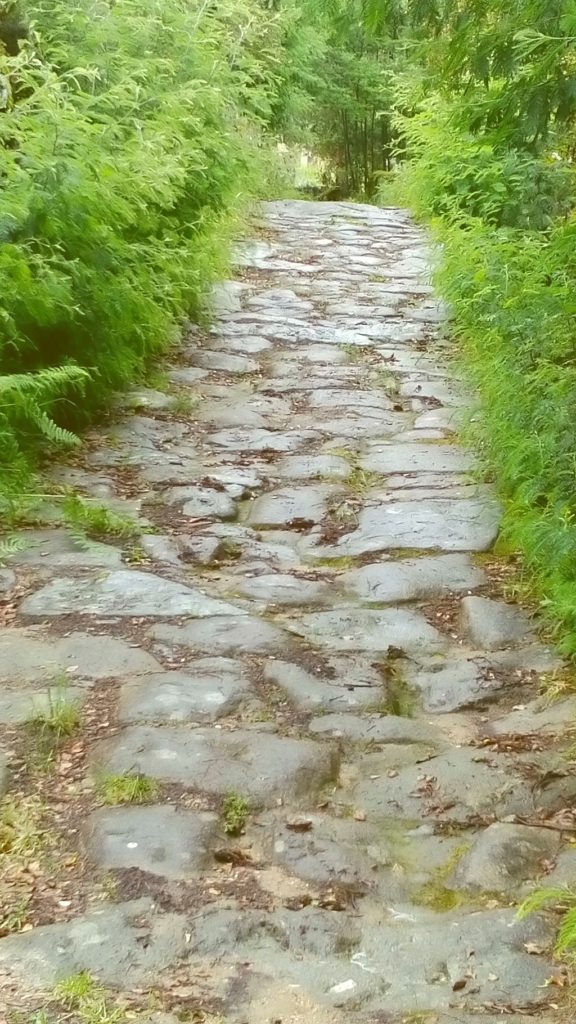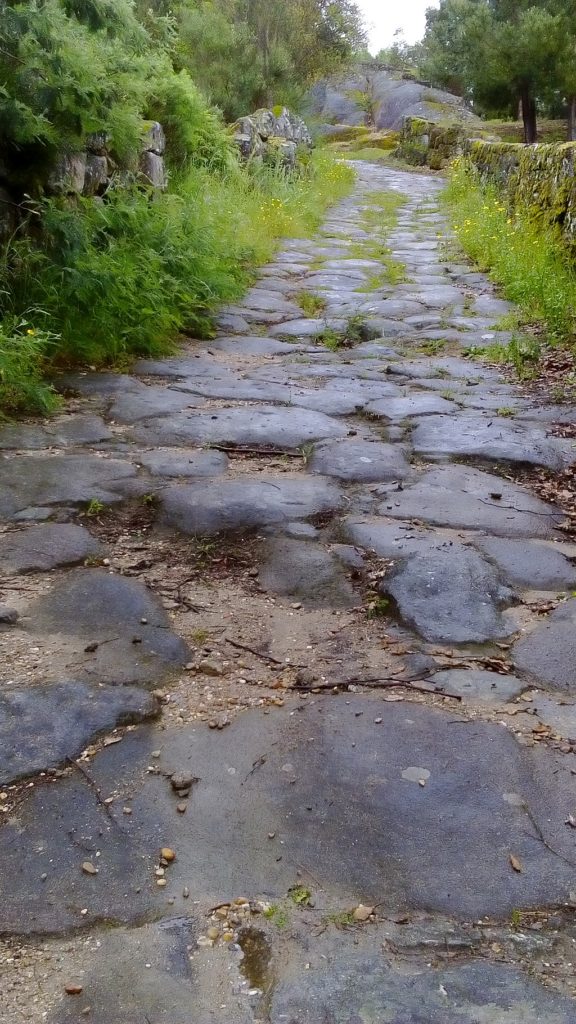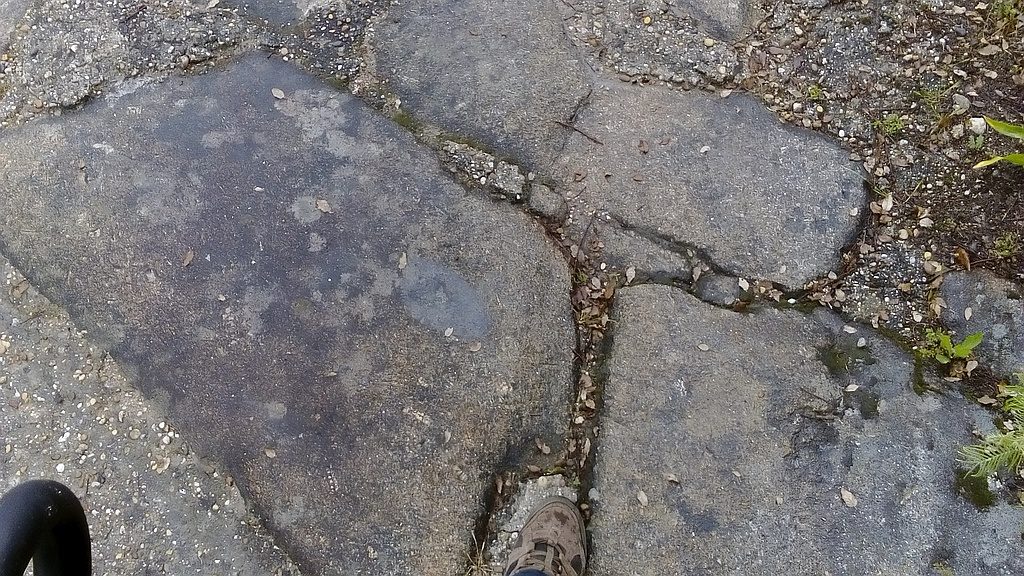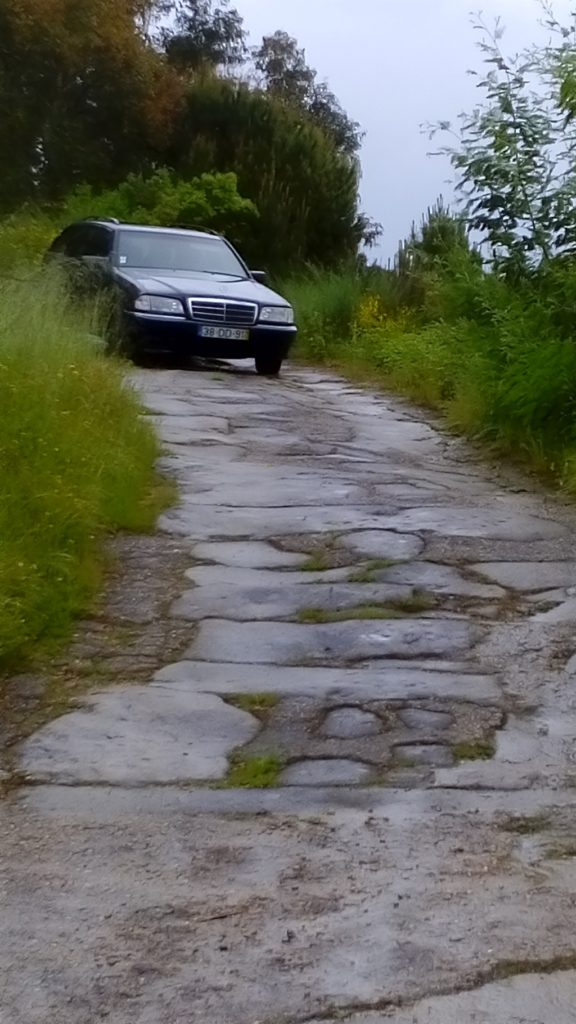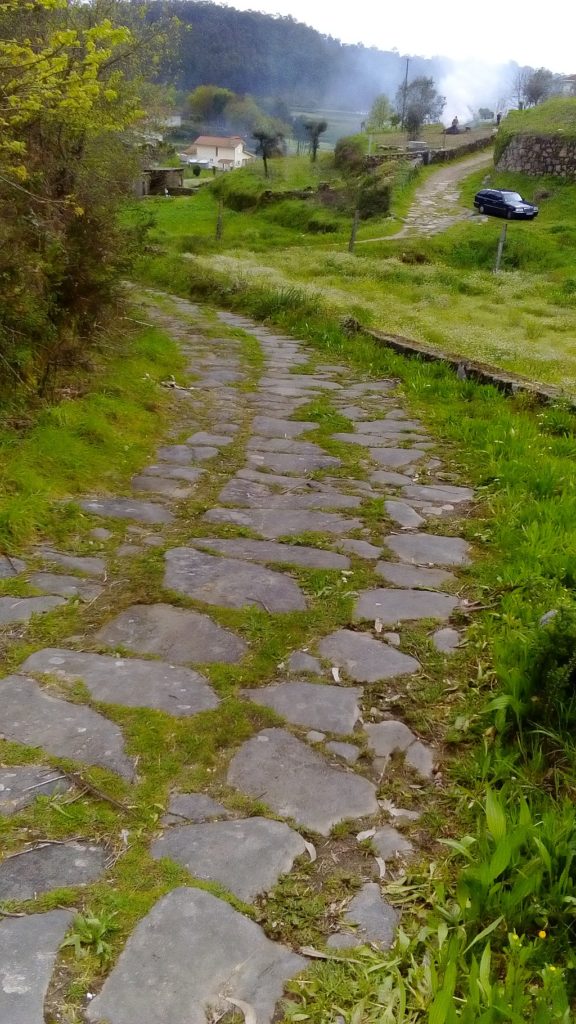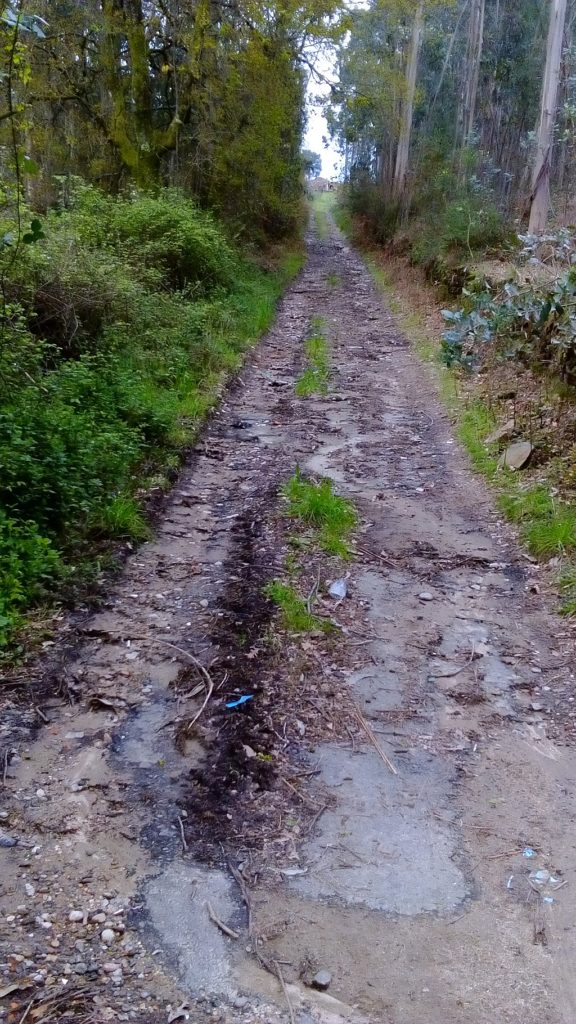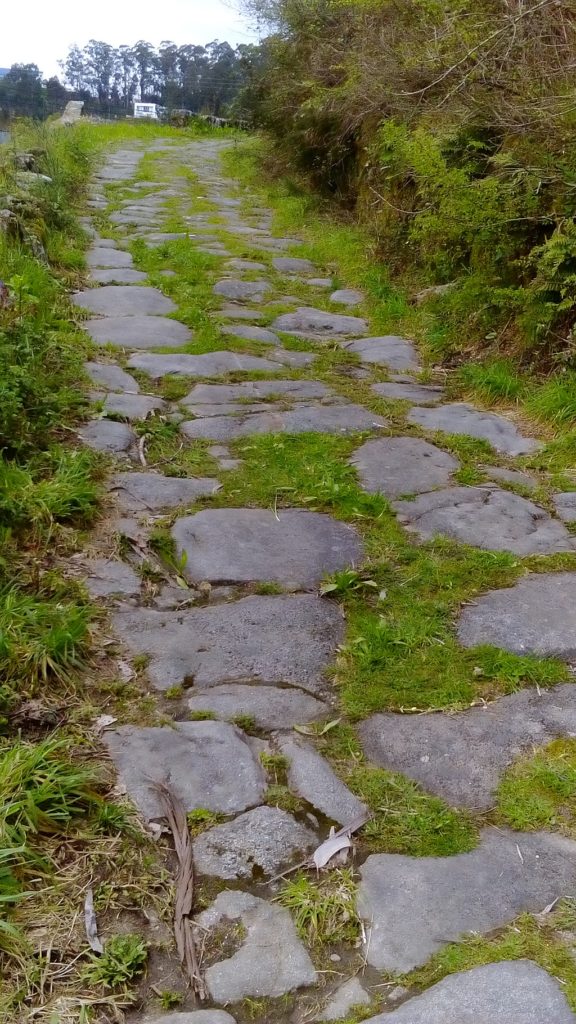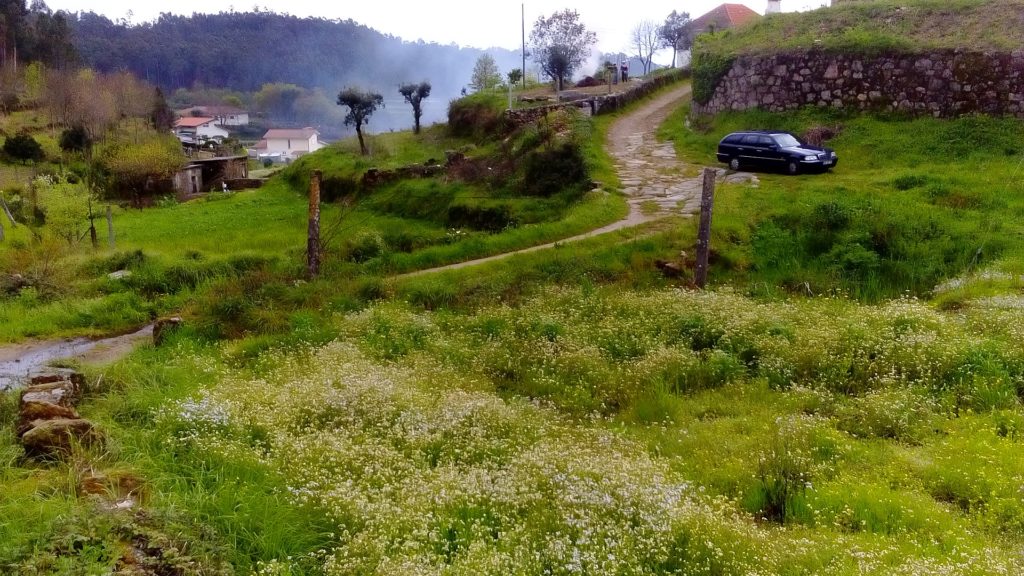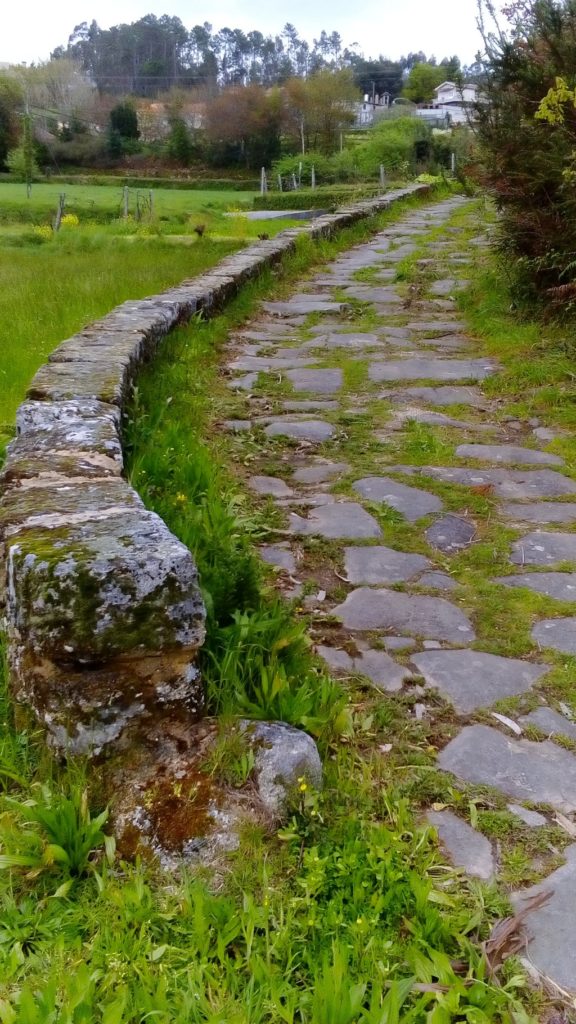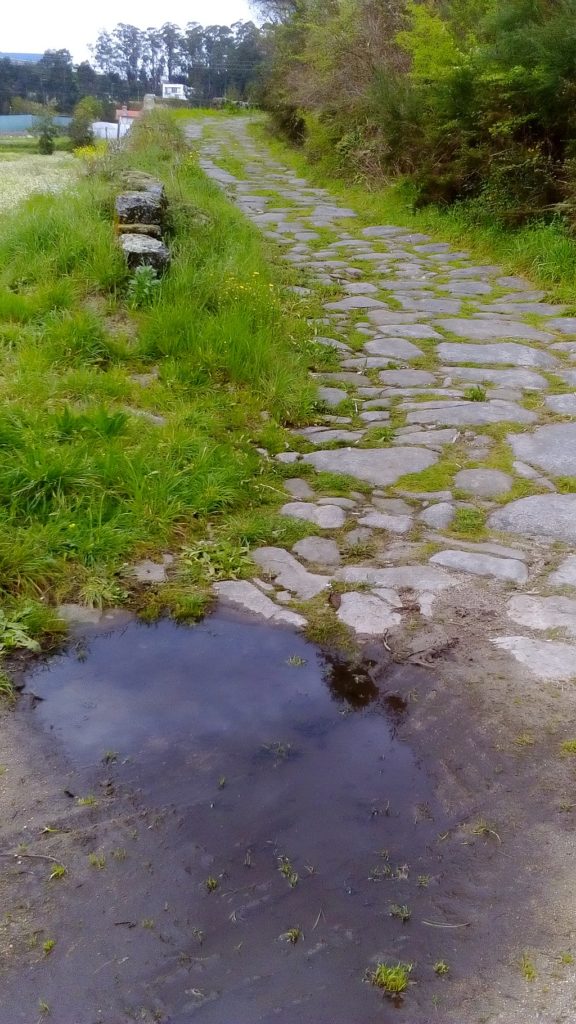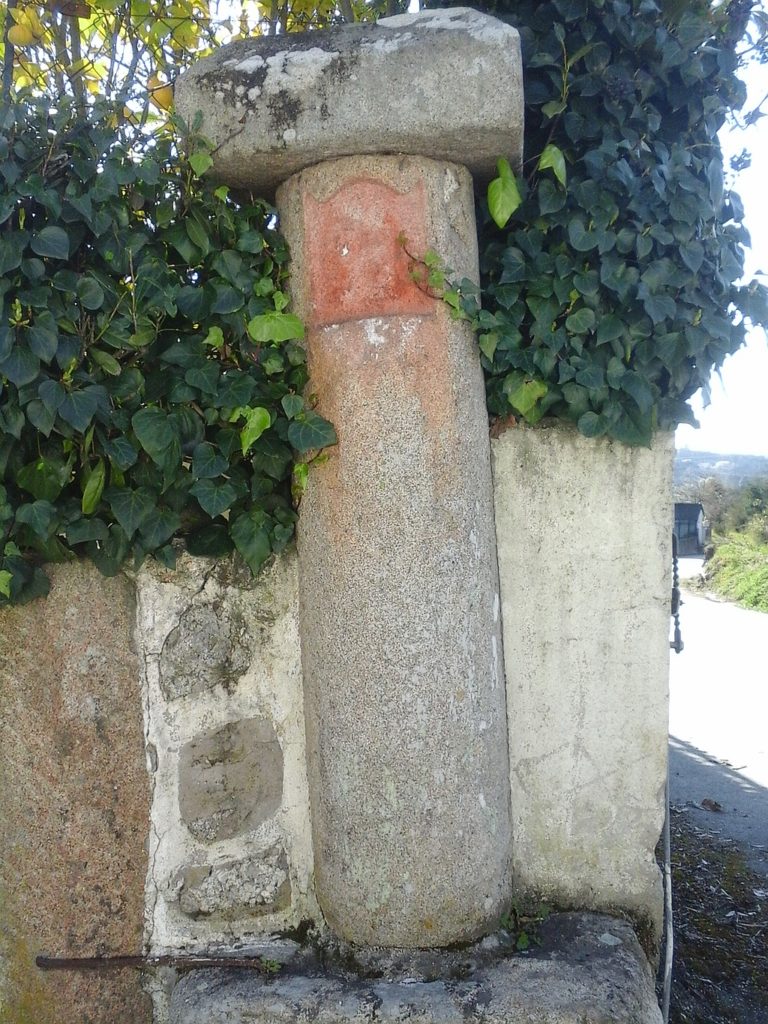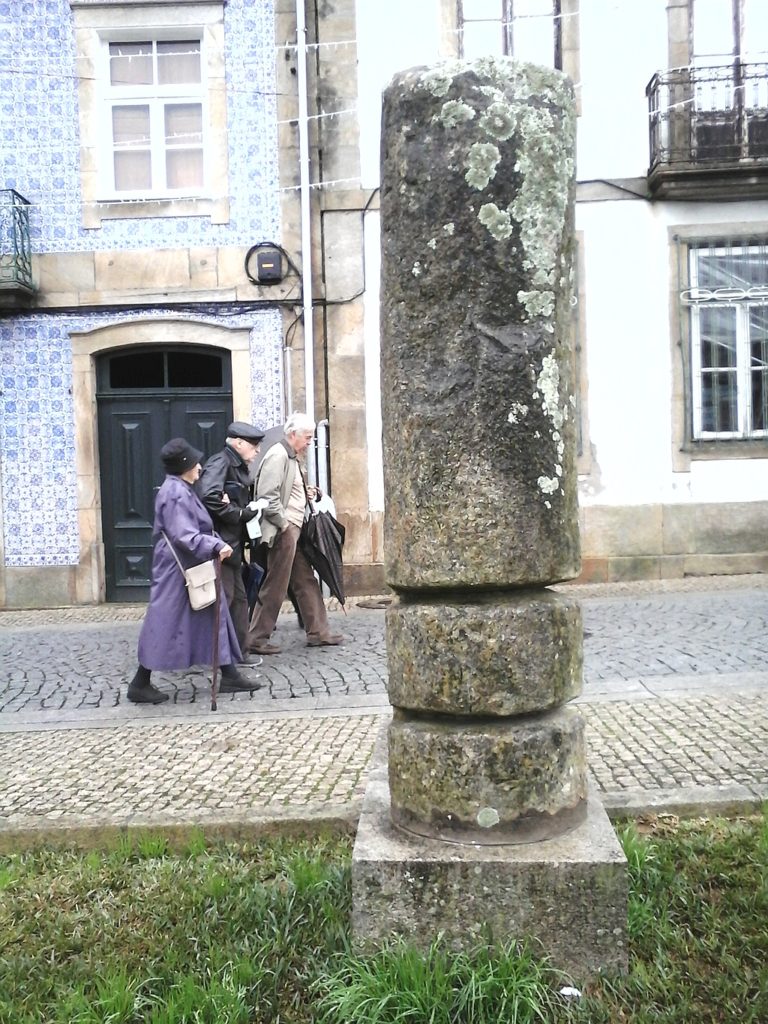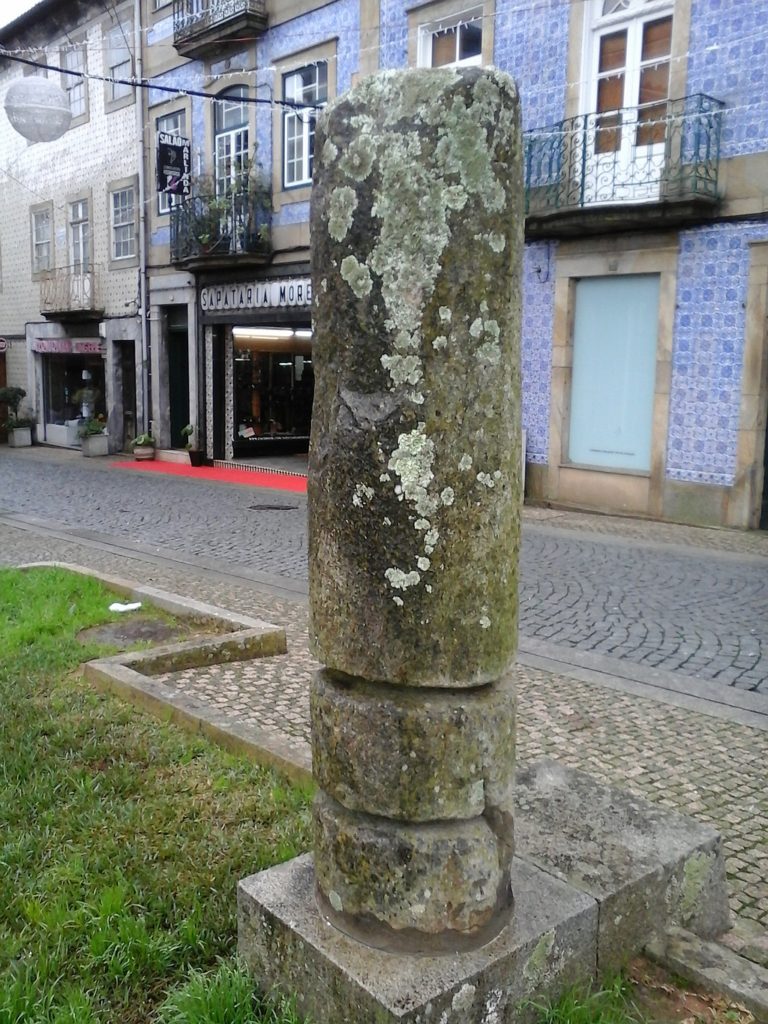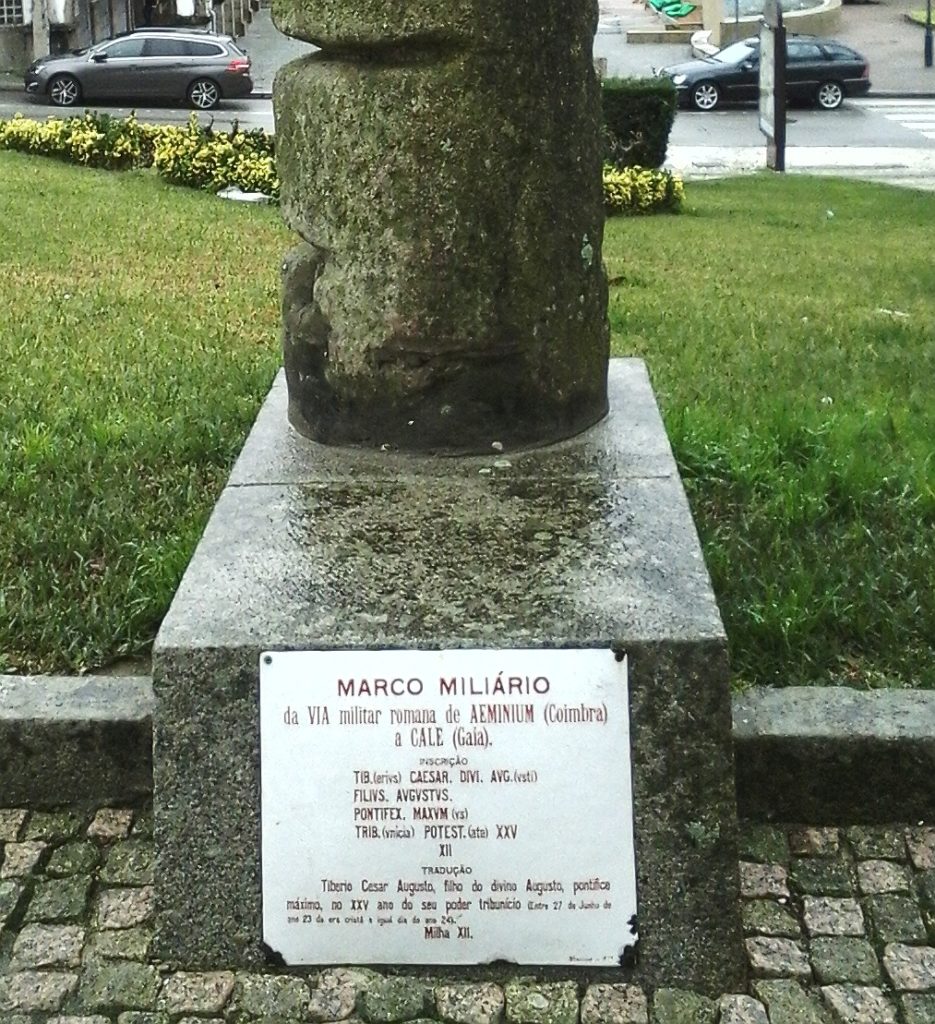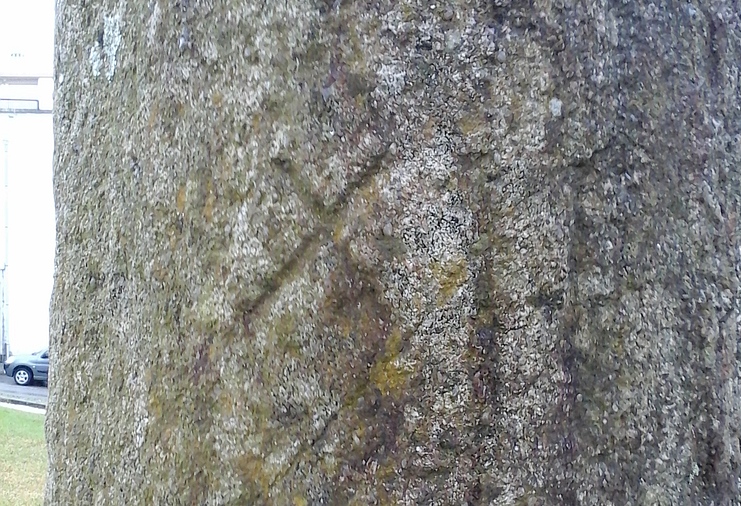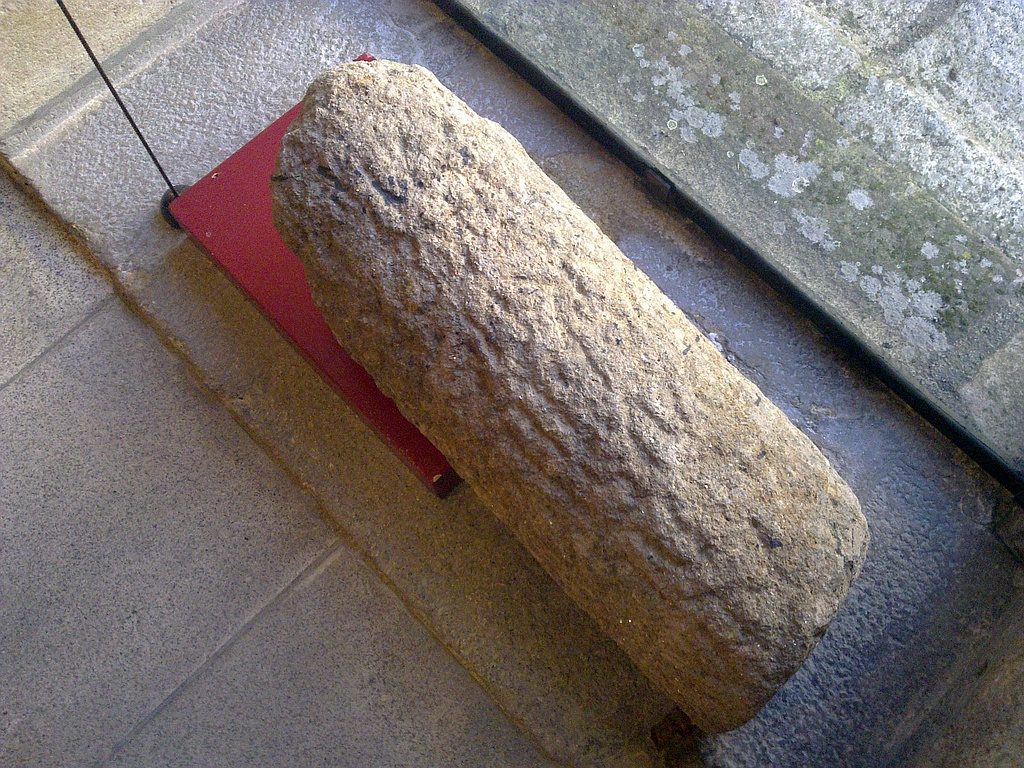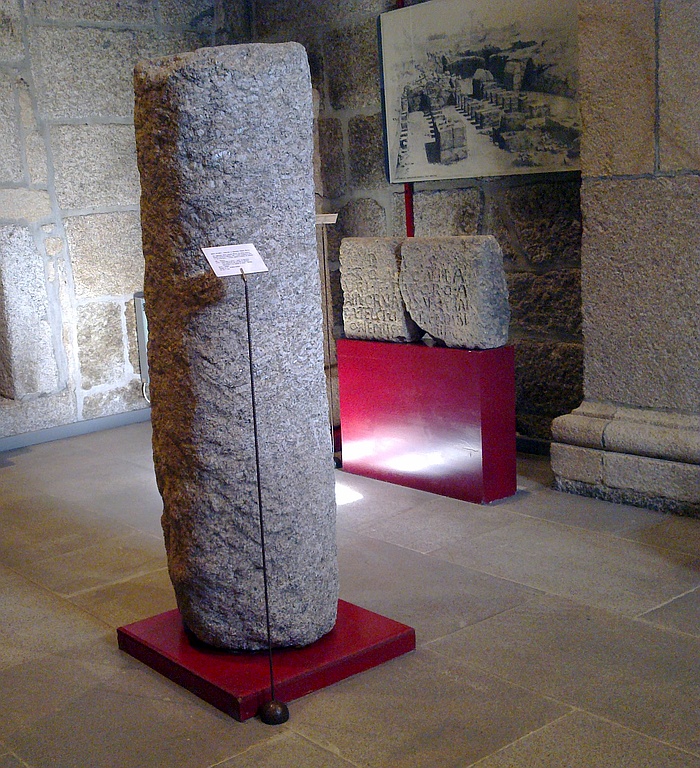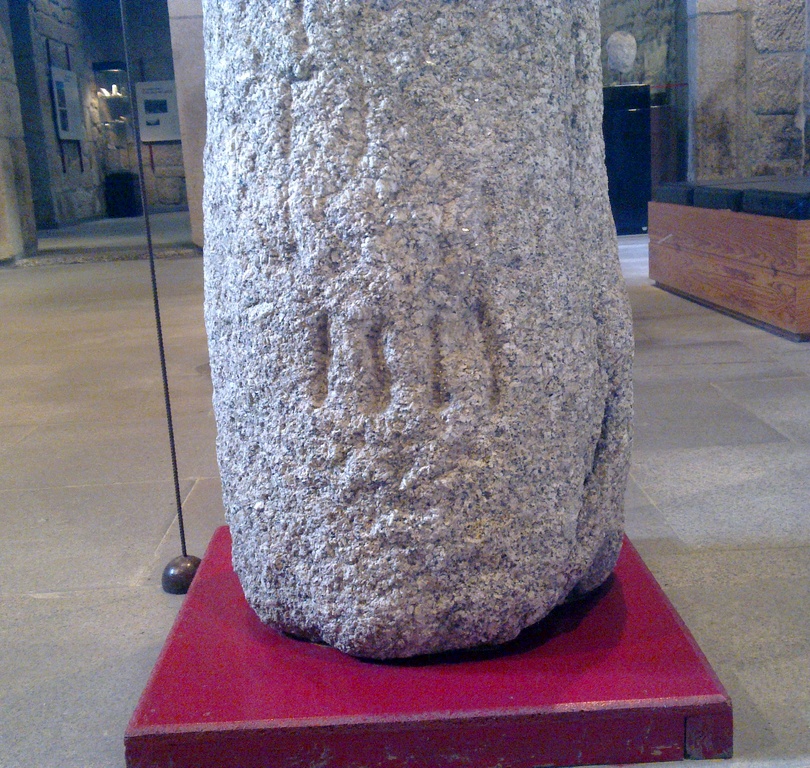A propósito da escavação em curso no acampamento militar romano da Lomba do Mouro (Castro Laboreiro), cujos resultados preliminares apontam para o período inicial da conquista do noroeste peninsular (video), tentei identificar o possível traçado da via que cruzava o acampamento romano, situado nas alturas da Serra de Laboreiro, actual fronteira Galiza/Portugal (aparentemente ausente da literatura científica). De facto, se perlongarmos a via para sul percorrendo a linha de festo da serra vamos de encontro à via nova, cruzando o rio Lima próximo da povoação de Torno (Lóbios). Este trajecto seria assim uma derivação para norte da via nova entre Bracara e Asturica, cruzando o Lima num meandro do rio designado por Retorta que dista cerca de 45 milhas de Braga. Ascendia depois a encosta até à Ermida de San Benito (talvez por Lama e Ferreiros), continuando depois por alturas da Serra de Laboreiro até ao acampamento romano, perfazendo 13 milhas desde o Lima, distância habitual entre estações viárias.
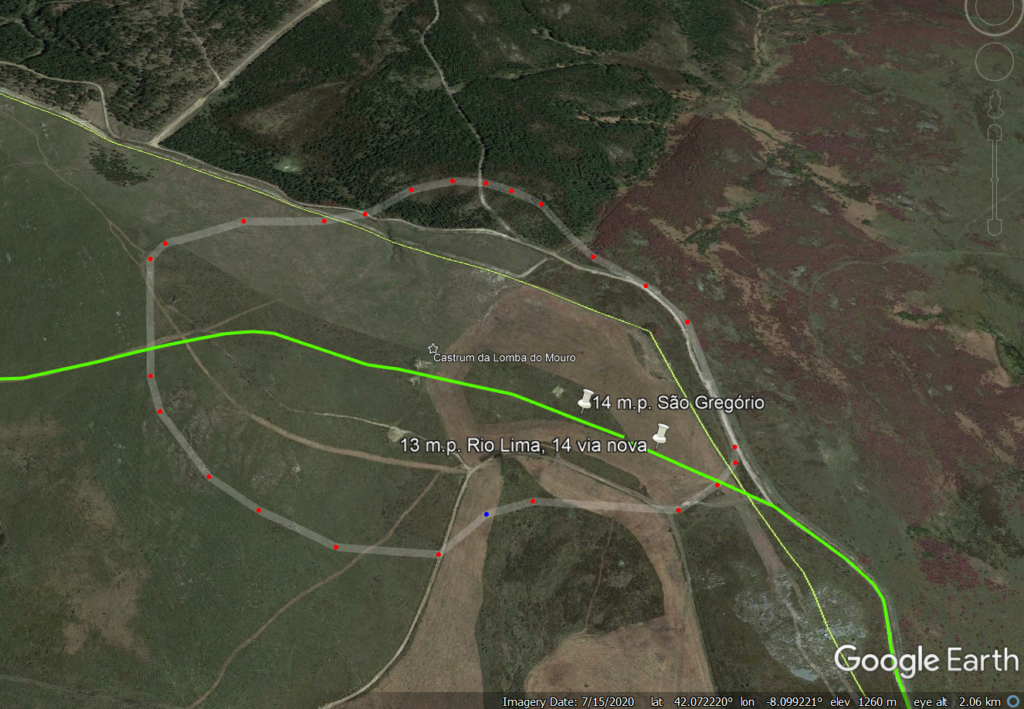
O campo ostenta ainda os vestígios da sua muralha com 2,2 m de espessura, cercando uma área com mais de 20 hectares (Costa-García, Fonte e Gago, 2019: 33). A existência deste acampamento implica que a via teria continuação para a Galiza, mas o seu percurso para norte a partir do acampamento não parece ser viável, apresentando um terreno muito acidentado, onde a passagem se apresenta muito dificultada. Deste modo, é mais provável que a via fizesse uma inflexão rumo a Castro Laboreiro (por Alto da Picota, Queimadelo, Falagueiras, Coriscadas e Porto de Carros), para daqui retomar a direcção norte que trazia do rio Lima, seguindo por Porteiro (antigo «Porto de Asnos») e pelo vale do rio Trancoso até São Gregório, onde entrava na Galiza. O seu traçado deverá corresponder ao caminho que passa nos topónimos viários Vido, Portelinha e Porteiro ou Porto de Cavaleiros (antigo «Porto de Asnos»), continuando por Alcobaça, A-da-Velha, Campo do Souto, Sobreira e Cristoval até São Gregório, descendo daqui para cruzar o rio Trancoso na chamada Ponte Velha ou Ponte Barxas, antiga porta de entrada no território Galego. Na continuação, a via poderia seguir junto do topónimo Vendas em direcção à Ermida de San Xusto (Trado), local a cerca de 18 milhas da Lomba do Mouro, possivelmente rumo a Ourense, mas o seu destino final é ainda incerto.

A importância estratégica desta via de penetração dos exércitos romanos da fase inicial da conquista parece atestada pela grande dimensão do recinto militar, cercado quase na totalidade por uma sólida muralha que só teria justificação para uma via da maior importância militar. A sua localização, a meio caminho entre os rios Lima e Minho (cerca de 13 milhas ao Lima e cerca de 14 a São Gregório), permitia-lhe exercer total controlo desta passagem.
Embora fosse pressentido por alguns autores que deveria existir uma derivação da via nova para norte, o seu traçado continuava a levantar muitas dúvidas. A identificação e caracterização deste importante assentamento militar vem assim trazer um forte argumento para a identificação deste eixo viário e a sua articulação com os grandes itinerários da região.
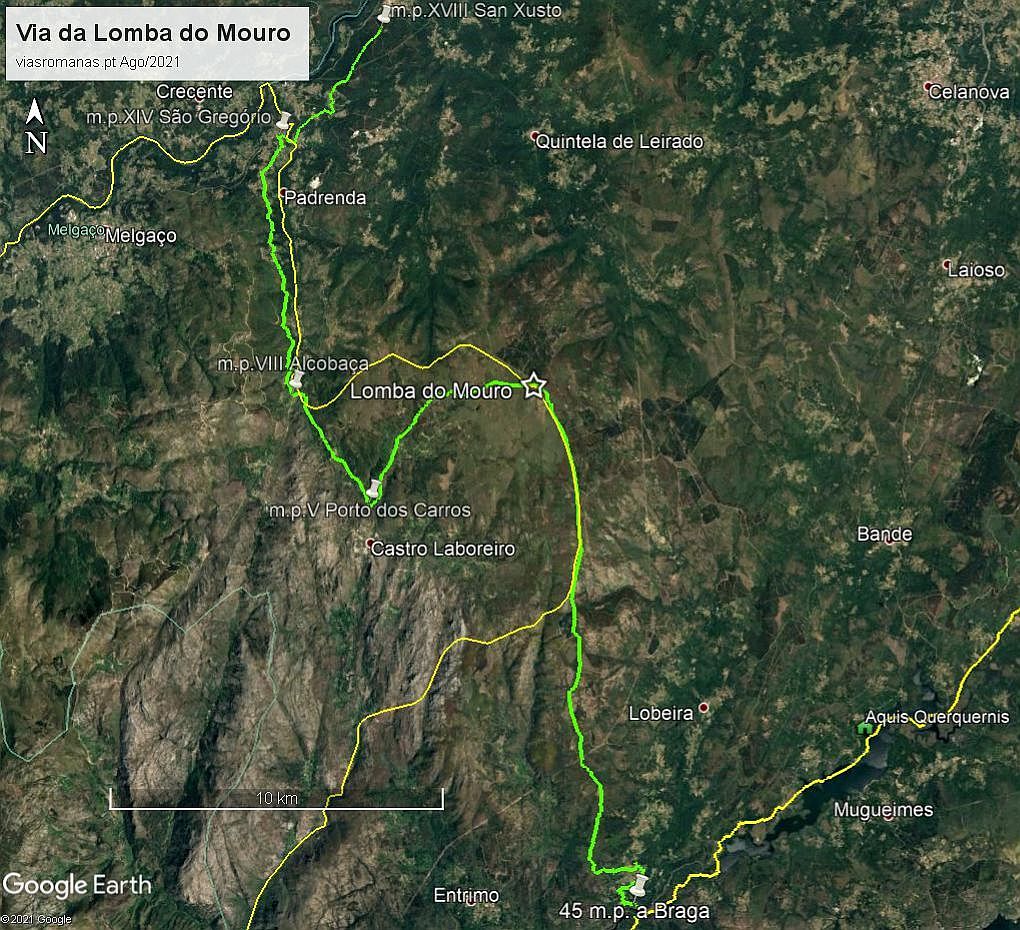
Não parece haver qualquer dúvida sobre a antiguidade deste caminho, dado que o acampamento romano assenta sobre um vasto campo coberto de monumentos funerários megalíticos que testemunham a sua utilização desde tempos bem recuados. Apesar do abandono do recinto após a conquista deste território, a via terá permanecido em utilização até ao período alto-medieval, durante no qual se foi formando a linha divisória entre Portugal e o actual território Galego. O facto de a via percorrer ambos os lados desta divisória poderá ter contribuído para o seu declínio dado que estava agora cortada pela linha fronteiriça.
A parte “portuguesa”, ligando Castro Laboreiro a São Gregório, pelo referido
«Porto de Asnos» continua em utilização como principal porta de entrada na Galiza, tal como é referido em vários documentos medievais, sendo considerada uma passagem estratégica para a defesa do território de Entre Lima e Minho. Na sequência de uma disputa tributária com o vizinho Castelo de Melgaço, este troço da via acaba sendo vedado ao trânsito em 1361, obrigando que todos os viandantes de e para a Galiza seguissem por Melgaço, o que também terá contribuído para o seu esquecimento:
“Para evitar o pagamento dessa portagem, os mercadores que acarretavam os seus bens de Galiza, e vice-versa, optavam pela passagem do Porto dos Asnos, lugar meeiro das freguesias de Lamas de Mouro e Castro Laboreiro. Para evitar essa evasão fiscal, por carta passada em Elvas, aos 28 de Maio de 1361, D. Pedro I interdita esse caminho, obrigando os mercadores a passar por Melgaço.” (Domingues, 2003: 11)
A crescente inutilização deste eixo viário poderá ter contribuído assim para o seu relativo esquecimento no contexto da viação romana, mas identificação do que parece ser “o maior e mais antigo” acampamento militar romano entre os séculos II e I a.C. (Costa-García, Fonte e Gago, 2019: 33), localizado precisamente a meio caminho entre os rios Lima e Minho, constitui um argumento de peso para validar a existência desta via que terá sido como tudo indica uma das principais linhas de penetração das hostes romanas durante o período da conquista do noroeste peninsular.
Bibliografia:
COSTA-GARCÍA, J.M.; FONTE, J.; GAGO, M.; (2019) – “The reassessment of the Roman military presence in Galicia and Northern Portugal through digital tools: archaeological diversity and historical problems”, Mediterranean Archaeology and Archaeometry 19, 3, (2019), p. 17-49 (https://zenodo.org/record/3457524)
COSTA-GARCÍA, J.M.; FONTE, J.; GAGO, M.; (2019) – “A reavaliação da presença militar romana na Galiza e no Norte de Portugal através de ferramentas digitais: diversidade arqueológica e problemas históricos”. Mediterranean Archaeology and Archaeometry 20 (2019)
(https://minerva.usc.es/xmlui/bitstream/handle/10347/19902/maa_resumo_pt.pdf)
DOMINGUES, José (2003) – “O Foral de D. Afonso Henriques a Castro Laboreiro. «Ádito» para o debate”. Porto, 2003, [colocado em linha a 6 de Maio de 2013]
http://www.academia.edu/3470740
romanarmy.eu – Coletivo de investigação sobre a presença militar romana no noroeste da Península Ibérica https://www.youtube.com/channel/UCpPG7vsTY5lpghKHcxXoRFg



